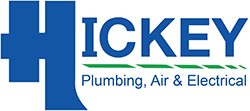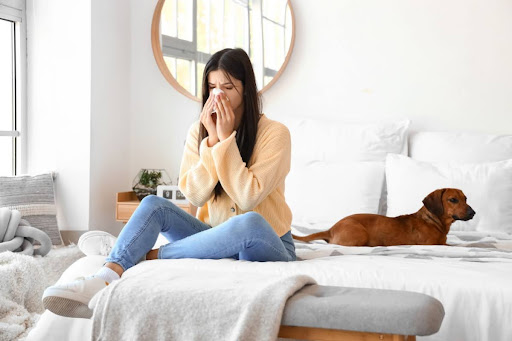When we think of air pollution, our minds often jump to the image of smog-covered cities. However, the air inside our homes and workplaces can sometimes be more polluted than the air outside. Recognizing the sources of indoor air pollution is critical for maintaining a healthy living environment. In this blog, we’ll dive into the common sources of indoor air pollution and provide practical tips on how to improve indoor air quality.
Common Sources of Indoor Air Pollution
The unfortunate truth is that indoor air pollution can sometimes be as bad, or even worse, than outdoor air pollution. In order to effectively reduce indoor air pollutants, it’s essential first to identify the specific indoor contaminants present in your environment. Let’s discuss some of the major indoor air pollutants that could be affecting your home.
Volatile Organic Compounds (VOCs)
Volatile Organic Compounds, or VOCs, are a significant source of indoor air pollution. These chemicals are emitted from products like paints, cleaners, and office equipment. Reducing exposure to VOCs is crucial, as these pollutants can contribute to health issues over both short and long periods.
Biological Contaminants
Mold, pollen, and pet dander fall into this category. These biological pollutants thrive in damp environments and can trigger allergies and asthma. Managing humidity and regular cleaning are effective ways to control these contaminants.
Combustion Products
Products of incomplete combustion, such as carbon monoxide and nitrogen dioxide, are dangerous indoor air pollutants released by gas stoves and heaters. Checking for proper ventilation and maintaining these appliances can mitigate their harmful effects.
Environmental Tobacco Smoke
Also known as secondhand smoke, environmental tobacco smoke is a toxic cocktail of over 4,000 chemical compounds. Not only is it a major indoor air pollutant, but it also elevates the risk of respiratory diseases and lung cancer in non-smokers.
Building Materials and Furnishings
Old or deteriorating building materials like asbestos insulation or lead paint, along with new furnishings, can release harmful pollutants into your home environment. Being mindful of the materials and products you bring into your home is essential for maintaining good indoor air quality.
Indoor Radon
Although less common than some other contaminants, it’s important to be aware of Radon. Radon is a naturally occurring radioactive gas that can enter homes through cracks in floors, walls, and foundations. It is the second leading cause of lung cancer, after smoking, and the leading cause among non-smokers.
Which Factor Would Increase Poor Indoor Air Quality?
So, what factors can worsen indoor air quality? Typically, the level of indoor air pollutants depends on various elements. Let’s explore what can negatively affect indoor air quality in more detail below.
Inadequate Ventilation
Which factor would increase poor indoor air quality? Top of the list is inadequate ventilation, which can trap pollutants inside and increase their concentrations to harmful levels. Ensuring enough fresh air through natural or mechanical means is vital.
High Temperature and Humidity
High temperatures and humidity can amplify concentrations of pollutants, particularly biological ones. Keeping your home at a moderate temperature and humidity helps control indoor air pollution.
External Pollution
Pollutants from outside, such as industrial emissions and outdoor allergens, can enter through doors and windows, worsening indoor air quality. Being aware of outdoor pollution levels can help you manage when and how to ventilate your home effectively.
Improving Your Indoor Air Quality
Now that we’ve discussed the most common indoor air pollutants and their sources, you might be wondering how to eliminate them. Fortunately, there are numerous strategies you can use to enhance your indoor air quality. Let’s explore some effective ways to improve the air you breathe indoors.
Increase Ventilation
Improving the flow of outdoor air into your home helps dilute indoor pollutants. Opening windows, using fans, and maintaining your HVAC system are all effective strategies.
Use Air Purifiers
Air purifiers can continuously remove indoor air pollutants, especially in areas where it’s hard to increase ventilation. Choosing a purifier with a HEPA filter is particularly effective against particulate pollutants.
Monitor and Control Humidity
Keeping humidity levels in check (between 30% and 50%) prevents mold growth and reduces dust mites, significantly improving your indoor air. Mold is known to flourish in moist environments, and its spores can easily become airborne and inhaled, potentially causing respiratory issues, allergic reactions, and other health problems. By keeping your indoor humidity low, mold growth is inhibited, reducing these health risks. This is particularly important in areas of the home that are prone to moisture, such as bathrooms, kitchens, and basements.
Collaborate With Professionals
Working with experienced professionals from Hickey Plumbing, Air & Electrical can provide tailored solutions based on the specific indoor air quality challenges faced in your home. From identifying the major indoor air pollutants to installing advanced filtration systems, seeking expert guidance from professionals can help implement effective measures.
Contact Hickey Plumbing, Air & Electrical Today!
Addressing the sources of indoor air pollution can drastically enhance the air quality in your home, making it a healthier environment for you and your family. At Hickey Plumbing, Air & Electrical, we offer tailored solutions like whole-home air filtration systems to help you breathe easier.
Remember, taking control of your indoor air is a proactive step toward a healthier life. Now that you’re more familiar with indoor air pollutants and their sources, there’s never been a better time to take action. Contact us today to schedule your indoor air quality services in Lynchburg, VA, or one of the nearby areas!

